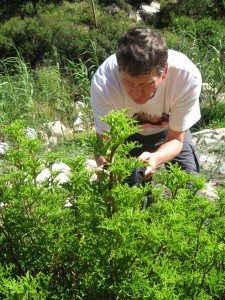
Standard Mendelian genetics teaches us to view living organisms as a duality: the DNA/genes constitute the genotype, and the observable characteristics that result from that set of genetic instructions are referred to as the phenotype. This view neglects what happens in-between, epigenetics, the developmental processes that translate the genetic instructions into the visible phenotypes of organisms. My conceptual focus is on providing ways of explaining how the relatively simple instructions contained in the DNA for making proteins can produce the marvelously complex and integrated organisms that populate the earth.
My research revolves around understanding the forces that shape the evolution of the phenotype, from the perspective of the reaction norm (i.e., the range of phenotypes that will be produced by a genotype when it is exposed to different environments). Experimentally I have studied the morphological responses of species and populations to environmental variability (their phenotypic plasticity), but I have become equally interested in the other side of the coin, namely what evolutionary forces operate to restrict the expression of phenotypic variation (the lack of plasticity, i.e., canalization). Some selective factors will favor plasticity, other forces favor canalization. The reaction norm that we observe has been forged by the balance of forces in this tension zone. There are a number of factors that impinge on the outcome: the predictability of environmental change, the ability to sense the change (or its correlates), the spatial or temporal nature of variability, and the scale at which it is perceived (e.g., within an individual’s lifetime).
There are also historical components to the presence/absence or form of plastic responses, and a second project is employing a phylogenetic approach, using the comparative method to investigate the ecological and developmental factors that determine variation in plasticity of leaf form among species in the plant genus Pelargonium. This is a subset of a much larger interdisciplinary program that Dr. Cynthia Jones and I have developed to examine the ecology and evolution of leaf shape variability. Several papers are already published.
The Pelargonium leaf shape work is embedded in an NSF Dimensions of Biodiversity grant project entitled Parallel Evolutionary radiations in Protea and Pelargonium in the Greater Cape Floristic Region.

